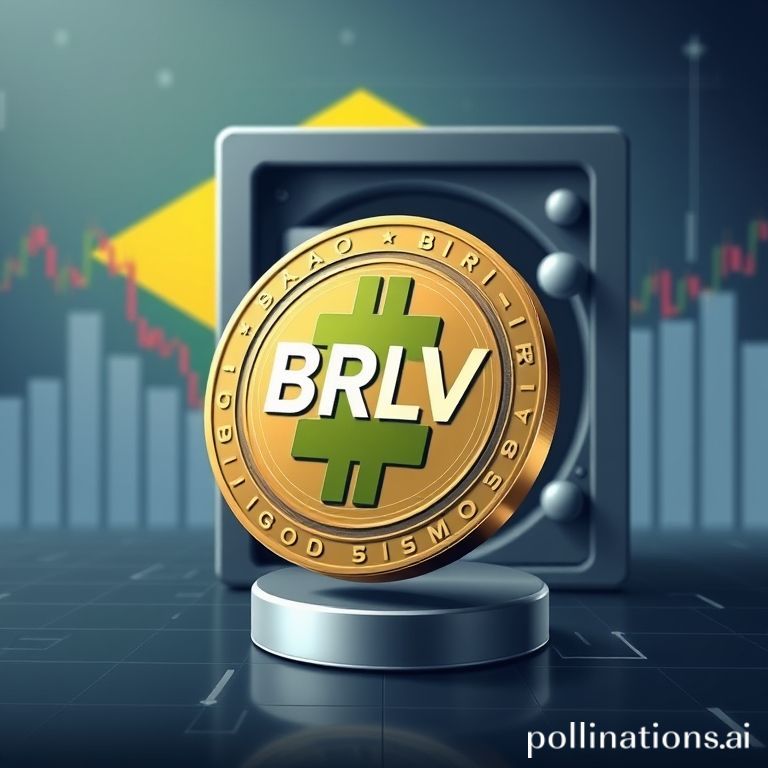BRLV stablecoin: A Tokenized Route to Capture Brazil's Sovereign Yields

BRLV stablecoin is a Brazilian real–pegged token fully backed by Brazilian government bonds, designed to give institutional investors compliant, tokenized access to Brazil's high sovereign yields while simplifying custody and operations.
BRLV stablecoin is a Brazilian real–pegged token fully backed by Brazilian government bonds. The structure aims to provide institutional investors with a compliant, tokenized pathway to access Brazil's high sovereign yields while at the same time simplifying custody and operational frictions that typically accompany cross-border fixed-income exposure.
From an editorial perspective, the significance of BRLV lies in how it melds two powerful trends: the continued institutional appetite for higher-yield sovereign exposure outside traditional custodial models, and the increasing adoption of tokenization as a means to represent real-world assets on-chain. By pegging to the Brazilian real and ensuring each token is fully backed by sovereign bonds, BRLV positions itself as a bridge between the regulated fixed-income world and the on-chain liquidity and programmability that digital assets can deliver.
Benefits for institutional investors are multi-layered. First, BRLV offers a way to capture Brazil’s nominal and real yields without the operational overhead of account opening, custody, and settlement across multiple jurisdictions. Second, tokenization can facilitate fractional ownership, potentially lowering minimum investment thresholds and broadening accessibility. Third, by maintaining a full backing with government bonds, BRLV can present a compelling risk profile for investors seeking exposure to sovereign credit rather than to speculative crypto assets.
At the same time, there are important risk and compliance considerations. The token’s claim to backing by sovereign bonds must be accompanied by transparent custody arrangements, independent attestations or audits, and clear legal recourse in the event of disputes. Regulatory clarity is paramount: institutional buyers will evaluate how BRLV fits within local securities, commodities, and stablecoin regulatory frameworks. In many jurisdictions, the treatment of tokenized bonds or bond-backed stablecoins remains evolving, and market participants should watch for guidance from regulators.
Market implications extend beyond immediate yield capture. If BRLV achieves traction with institutional clients, it could spur greater tokenization of other sovereign or high-grade fixed-income instruments, increasing on-chain liquidity in traditionally illiquid markets. That, in turn, could create new venues for price discovery and new forms of collateralization for decentralized finance protocols. However, one must weigh liquidity risk: secondary markets for BRLV need sufficient depth to ensure price stability, and mechanisms should exist to manage redemptions and maintain the peg to the Brazilian real.
Operationally, custody simplification is a strong selling point. By reducing the need for multiple custodial relationships and leveraging token transfers for settlement, BRLV may lower counterparty complexity and shorten settlement cycles. Nevertheless, the institutional adoption curve will depend on robust governance, secure custody of the underlying bonds, and transparent reporting that aligns with investor due diligence processes.
In summary, BRLV stablecoin represents an important evolution in the tokenization of sovereign debt: it offers a regulated, yield-bearing instrument that bridges traditional fixed income and digital asset markets. For investors and market participants, the announcement should be evaluated across three axes: yield opportunity, legal and regulatory clarity, and the depth and resilience of the token’s secondary market. If those elements align, BRLV could become a notable example of how tokenization unlocks new channels for institutional capital to access nontraditional yield opportunities.
Click to trade with discounted fees